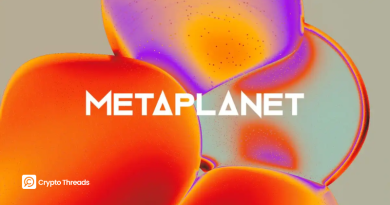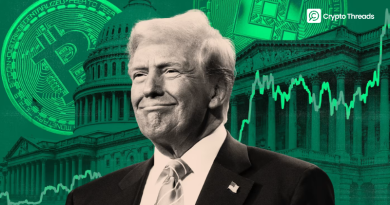Falcon USD Depegs from Dollar Amid Liquidity, Risk Fears
Key Takeaways
- Falcon USD (USDf) dropped to as low as $0.9783, losing its dollar peg
- Onchain liquidity decreased to $5.51 million, raising concerns within the DeFi community
- Falcon Finance claims the stablecoin is overcollateralized at 116% with $565 million in assets
- Community questions transparency and collateral asset quality
On Tuesday, Falcon USD (USDf), a synthetic overcollateralized stablecoin from the decentralized finance (DeFi) protocol Falcon Finance, dropped below its $1 peg. This occurred amid increasing concerns regarding diminishing liquidity and the standard of its collateral.
According to CoinMarketCap data, Falcon USD (USDf) plunged to $0.9783 on Tuesday morning. The drop triggered renewed scrutiny from the DeFi community, with several observers questioning the token’s underlying backing and governance model.
Alex Obchakevich, founder of Obchakevich Research, said he is “concerned about the situation,” adding that rumors surrounding collateral quality issues have further eroded investor confidence.
Unlike fiat-backed stablecoins such as USDC or USDt, which are supported by cash reserves in banks, Falcon USD is collateralized using digital assets, including volatile cryptocurrencies, locked in smart contracts. This structure introduces added risk in times of market stress.
Blockchain data explorer Parsec reported on X that on-chain liquidity for USDf has declined significantly. According to Parsec, liquidity currently stands at just $5.51 million.
“The blockchain data shows a sharp decline in liquidity, which only adds to the panic,” Obchakevich said, citing Parsec data.
Falcon USD Issuer Responds
Andrei Grachev, managing partner at DWF Labs—the company backing Falcon Finance and the stablecoin’s issuer, released a lengthy post on X addressing the accusations. He claimed that stablecoins and Bitcoin now make up 89% (about $565 million) of the total collateral, with only around 11% (roughly $67.5 million) in altcoins.
Grachev also stated that USDf remains overcollateralized at 116%. To manage risk, Falcon Finance employs only market-neutral strategies, avoiding directional trades. “Every minted USDf must be backed by a stable coin or hedged position that represents dollar value and has no directional risk,” Grachev explained.
He added that USDf’s peg is maintained organically by market participants. When the stablecoin trades above $1, arbitrageurs can mint and sell it; when it falls below $1, they can buy and redeem it, restoring the balance through arbitrage dynamics.
“Despite a brief depeg driven by market sentiment, the market has since stabilized and recovered quickly,” Grachev said, noting that the company “actively collaborates with multiple trading institutions to strengthen the peg.”
Community Challenges Falcon’s Claims
Obchakevich noted that the statement raises more questions than it answers. For example, he pushed back on the claim that “there is no alternative” to Falcon Finance, calling it “overly optimistic” and a “marketing ploy.” He added:
“Competitors such as DAI or USDC have well-established positions with larger reserves and a wider user base.”
Others in the community were more direct. Pseudonymous developer 0xlaw, who runs the yield farming protocol Stream Finance, accused Falcon Finance of holding “tens of millions of dollars in bad debt” and went so far as to call USDf “a scam” in a post on X.
According to 0xlaw, USDf may be backed by illiquid assets, including a large amount of Movement Network’s MOVE token. Notably, Coinbase suspended trading of MOVE in May, citing noncompliance with listing standards.
In addition, a separate risk report by DeFi research group LlamaRisk, published in late May, flagged multiple red flags. The report warned that “the Falcon team has unilateral authority over the operational management of the reserve assets,” raising concerns about centralized control.
The report also alleged possible over-issuance of tokens: “Using DOLO as collateral, up to 50,000,000 USDf can be minted, which exceeds DOLO’s market capitalisation.”
Furthermore, LlamaRisk pointed out missing disclosures, including the absence of a full reserve breakdown and the lack of access to Falcon’s insurance fund, both of which are considered essential safeguards in the event of a broader collapse.
The Falcon USD situation is still up in the air. Even though the issuer says the peg is back and there’s enough backing, people are still worried about transparency, what assets they hold, and how centralized everything is. For those of us in DeFi, this just shows how important it is to really dig into a stablecoin’s collateralization, and also its governance.



